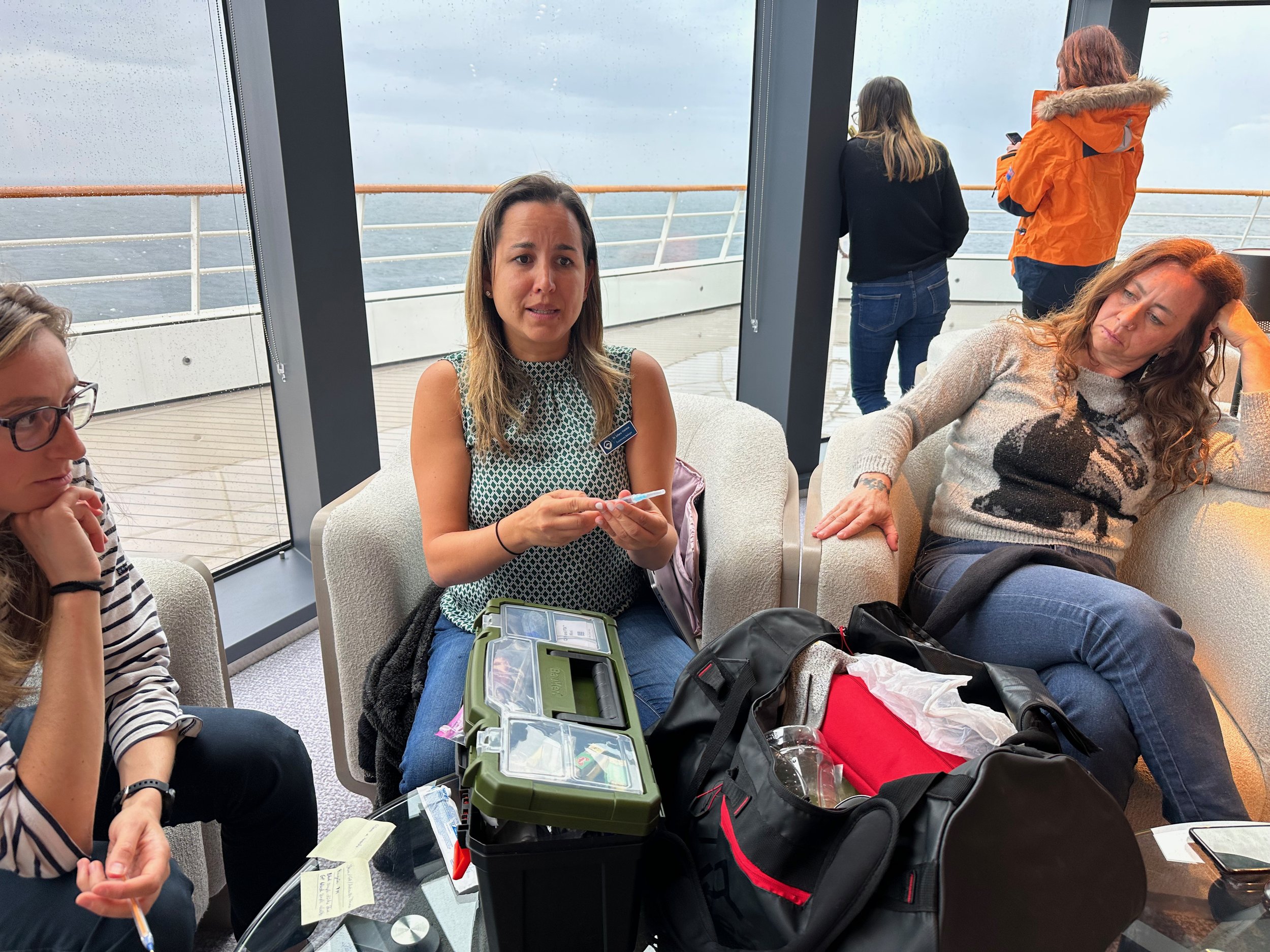A New Kind Of Scientific Mission
Chapter 1 of SEDNA’s expedition in Antarctica
Words by Clara Le Fort
A world-class explorer and naturalist, French native Nicolas Dubreuil has been living in Greenland and leading expeditions for 30 years. Each and every trip he takes to the Arctic or the Antarctic is an opportunity to document the many ways in which the colder latitudes of the globe are being affected by climate change. Having worked with luxury cruise-ship company Ponant for many years, he recently launched his own science-led business, SEDNA, with great ambitions that will lead to meaningful breakthroughs, he hopes.
“Antarctica plays a central role in the global climate system, so studying the impacts of certain global threats, such as climate change, on the remote ecosystem is crucial,” Dubreuil tells Looms. He advocates that scientists should play a bigger and more vocal part in this arena: “Scientists need to take centre stage and communicate better. We all need to understand what is at stake!”
Nicolas Dubreuil photographed by Stéphane Gautronneau
Negotiations to break the ice
Towards the end of 2022, Ponant put Dubreuil in touch with a client who was planning a ‘no-expense-spared’ trip to Antarctica to celebrate his daughter’s birthday. On hearing their extravagant plans, Dubreuil initially refused to lead the expedition. “Chartering an icebreaker plus two submarines and three helicopters makes no sense,” he told the client. “It is meaningless. Yes, you have the money to do it, but I personally can’t condone that. It brings nothing to the planet; it only harms it.”
“Countless scientists need access to an icebreaker to conduct research: they don’t have the money nor do their governments,” Dubreuil continued, underlining his standpoint. “Fundamental research, which is purely academic and therefore not profit driven, is always the poorer parent. But, as its name suggests, it is what leads to the greatest breakthroughs.”
The client’s response was as refreshingly unexpected and emphatic as Dubreuil’s bold dismissal; he gave the go ahead for a more meaningful trip, as Dubreuil saw fit, inviting scientists as his guests. Thrilled about being given a carte blanche, Dubreuil set his goal: to regroup 26 international scientists from many different fields to explore the Weddell Sea, one of the very last protected areas in the world. Nearly impenetrable to human exploration – until now – the Weddell Sea’s inaccessibility and seemingly stable climate mean it is an ideal ground for scientific exploration and conservation.
Preparing for the expedition which brought together 26 international scientists. Images by SEDNA
A sea of untold discoveries awaits
To ensure the lightest of footprints in their exploration, the team would have to follow the strictest procedures, treading very carefully. “The unspoiled ecosystem contains untouched animal populations, and we actually don’t know anything about the biodiversity there, as no scientist has ever visited,” says Dubreuil. “It’s crucial that scientists access it to collect data that will become a standard, a reference point in the future to make comparisons. The data collected by Jean-Baptiste Charcot in Antarctica in 1903 still serves as a basis today. Now, we need to understand how much an area can be impacted by mankind, despite the fact that humans have never set foot there.”
With the expedition confirmed, Dubreuil chartered Ponant’s Le Commandant Charcot, the world’s most sustainable and powerful non-nuclear icebreaker, for a 15-day round-trip from Ushuaia, the southernmost point of Argentina, with 90 guests and 26 scientists on board. On December 22 2022, they set sail with key representatives from Chile’s Millennium Institute for Biodiversity of Antarctic and Subantarctic Ecosystems, France’s Sorbonne University, United States’ MIT and England’s Imperial College and British Antarctic Survey to explore the Weddell Sea. A world premiere!
The current state of global scientific funding is approaching bankruptcy, which is what makes this particular venture so exciting – it’s a glimpse into the future of impactful discovery, where those with the funds align their enjoyment with making a difference, and scientists are seen in a different light. As it stands, it’s a once-in-history opportunity. And, we have it under good authority that the resulting research is way beyond what could be hoped for or expected. To be continued…
A world-class icebreaker, Le Commandant Charcot is Ponant’s newest polar ship. Image by Olivier Blaud
Scientific briefing onboard. Images by SEDNA
This is the first instalment of Looms’ ongoing reportage following the SEDNA expedition and its research and learnings. Check back for next month’s update, when we’ll find out what happened on the trip and the scientists’ take on this unparalleled experience. Until then, for more details visit sedna-explore.com











